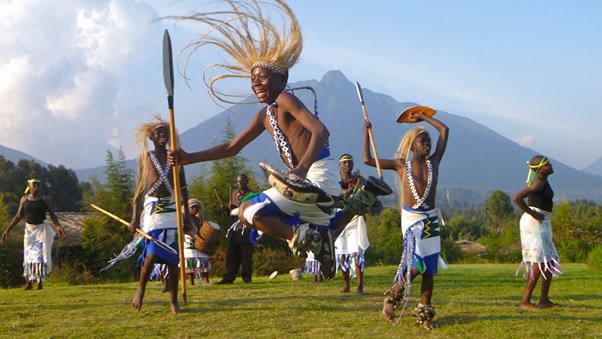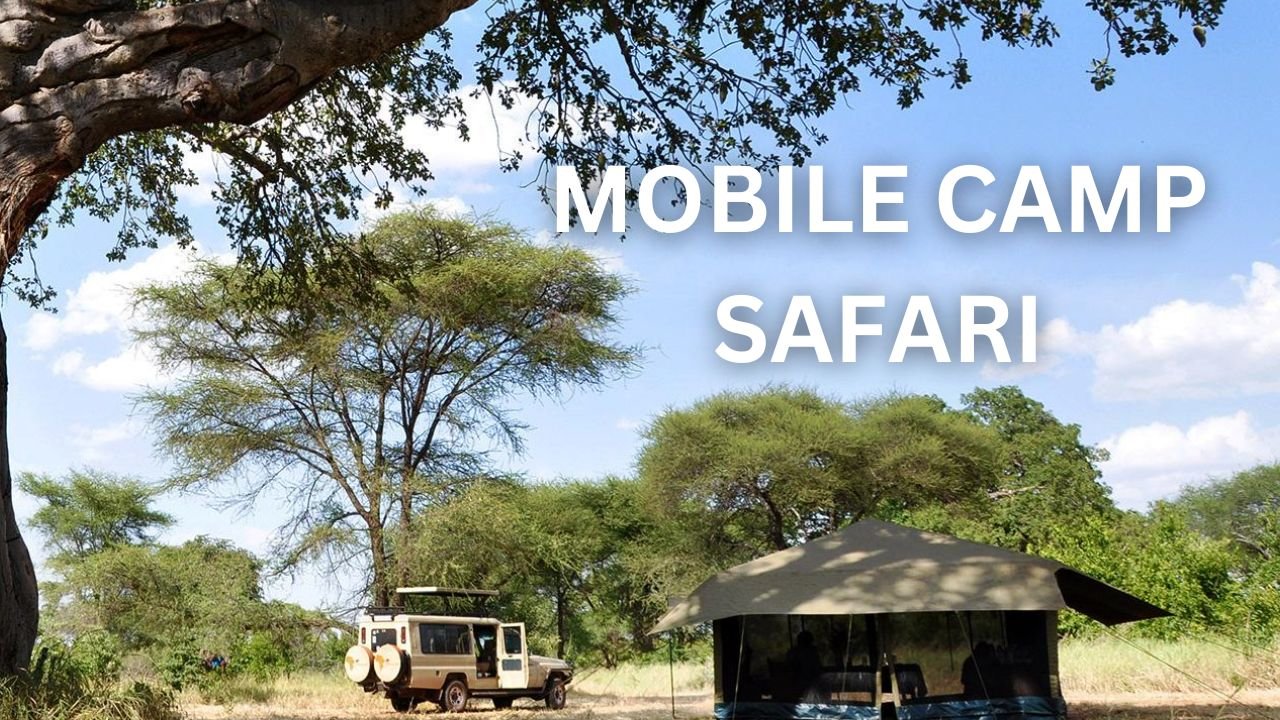Location of Katwe Salt Lake
Location of Katwe Salt Lake is in Queen Elizabeth National Park, which is in southwestern Uganda. The lake is part of a larger salt mining area and is one of several crater lakes found within the park. It is situated near the town of Katwe, which is known for its salt mining activities.
Katwe Salt Lake is a hypersaline lake, meaning it has a high concentration of salt, which makes it unsuitable for most forms of life. The lake is formed in a volcanic crater and is fed by underground springs that bring mineral-rich water into the lake. The high salt content of the lake makes it an ideal location for salt extraction.

Salt mining has been carried out at Katwe Salt Lake for centuries, and it remains an important economic activity for the local community.
The mining process involves evaporating the water from the lake to obtain the salt crystals, which are then processed and sold. The traditional methods of salt mining have been passed down through generations, and visitors to the lake can observe the mining process and learn about the local culture and history associated with salt production.
In addition to the salt mining activities, Katwe Salt Lake is also a significant site for bird watching. The lake attracts a variety of bird species, including flamingos, pelicans, herons, and many others. Visitors to the lake can enjoy bird watching tours and witness the diverse avian population that thrives in this unique environment.
Overall, Katwe Salt Lake offers a fascinating glimpse into the traditional salt mining practices and provides an opportunity to appreciate the natural beauty and wildlife found within Queen Elizabeth National Park.
While Katwe Salt Lake itself is primarily known for its salt mining activities and bird watching opportunities, Queen Elizabeth National Park as a whole offers a wide range of adventure activities for tourists to enjoy.
Activities to do around Katwe salt lake
Here are some popular adventure activities that visitors can engage in within the park:
- Game Drives: Queen Elizabeth National Park is home to a diverse array of wildlife, including elephants, lions, leopards, buffalos, and various antelope species. Game drives provide an exhilarating opportunity to explore the park and spot these magnificent animals in their natural habitat.
- Boat Safaris: The park is bisected by the Kazinga Channel, a natural waterway that connects Lake George and Lake Edward. Boat safaris along the channel offer a unique perspective to observe hippos, crocodiles, waterbirds, and other wildlife that gather along the shores.
- Chimpanzee Trekking: Kyambura Gorge, also known as the “Valley of Apes,” is located within the park and offers chimpanzee trekking experiences. Guided hikes through the forest provide a chance to encounter these fascinating primates up close.
- Hot Air Balloon Safaris: For a truly memorable experience, visitors can take to the skies in a hot air balloon and enjoy a bird’s-eye view of the park’s landscapes, wildlife, and lakes. This activity offers a unique and breathtaking perspective of Queen Elizabeth National Park.
- Nature Walks and Hiking: Several trails and nature walks are available within the park, allowing visitors to explore the diverse ecosystems on foot. These guided walks offer opportunities to learn about the park’s flora, fauna, and smaller wildlife species while enjoying the scenic beauty of the surroundings.
- Cultural Encounters: Queen Elizabeth National Park is located in an area with rich cultural heritage. Visitors can engage in cultural encounters with local communities, such as the fishing villages around Lake George, to learn about their traditions, lifestyles, and experience traditional dances, music, and crafts.
- Night Game Drives: For a thrilling and unique experience, some safari operators offer night game drives within the park. Equipped with spotlights, visitors have the chance to spot nocturnal wildlife species that are active after dark, such as lions, leopards, hyenas, and servals.
- Bird Watching: With over 600 bird species, including the famous shoebill stork, Queen Elizabeth National Park is a paradise for bird enthusiasts. Guided birdwatching tours allow visitors to spot a wide variety of colourful and rare bird species in their natural habitats.
- Nature Photography: The park’s stunning landscapes, diverse wildlife, and vibrant birdlife provide excellent opportunities for nature photography. Capture breathtaking shots of wildlife, panoramic views, and dramatic sunsets to create lasting memories of your visit.
- Lion Tracking Research: Some conservation organizations offer the opportunity to participate in lion tracking research activities. Accompanied by researchers, visitors can help track lions using radio telemetry equipment, contributing to ongoing conservation efforts and learning about lion behaviour and habitat conservation.
- Community Visits: Explore the local communities surrounding the park and engage in community-based tourism activities. This can include visiting traditional villages, interacting with local residents, learning about their customs and traditions, and supporting local artisans by purchasing their crafts.
- Tree Climbing Lions of Ishasha: Ishasha, a southern sector of Queen Elizabeth National Park, is renowned for its tree-climbing lions. Take a game drive through this area and search for the unique spectacle of lions lounging in the branches of fig trees.
- Canoeing and Kayaking: The Kazinga Channel and Lake Edward provide opportunities for canoeing and kayaking adventures. Paddle along the waterways, enjoying close encounters with wildlife, birds, and stunning landscapes.
- Forest Walks and Primate Tracking: Apart from chimpanzees, the park is home to other primate species such as baboons, monkeys, and vervet monkeys. Guided forest walks and primate tracking expeditions offer the chance to observe these primates and learn about their behaviour and conservation.
- Fishing: Lake Edward and other smaller lakes within the park offer fishing opportunities. Enjoy a relaxing day of fishing and try your luck at catching species like tilapia, catfish, and Nile perch.
These are just a few examples of the adventure activities available to tourists in Queen Elizabeth National Park. The park offers a diverse range of experiences that cater to different interests, allowing visitors to create unforgettable memories and immerse themselves in the stunning natural beauty and wildlife of the area.
Before visiting Katwe Salt Lake in Queen Elizabeth National Park, visitors should be aware of the following essential information:
Salt Mining Operations:
Katwe Salt Lake is primarily known for its traditional salt mining activities. Visitors should be prepared to witness and learn about the local salt mining process. It’s essential to be respectful of the miners and their work while observing the operations.
Safety Precautions:
The Salt Lake is a hypersaline environment, meaning the water has a high salt concentration. Visitors should avoid swimming or ingesting the water as it can be harmful. Also, take care while walking around the lake to prevent accidental slips or falls.
Climate and Weather:
Uganda’s climate is generally warm throughout the year, but it can vary depending on the season and location. Queen Elizabeth National Park experiences two rainy seasons, from March to May and from September to November. Visitors should pack appropriate clothing for both warm weather and potential rain showers.
Insect Protection:
As with any natural environment, it’s advisable to carry insect repellent to protect against mosquitoes and other insects, especially during the wetter months when their populations may be higher.
Guided Tours:
To have a comprehensive and safe experience, consider taking guided tours with knowledgeable local guides. They can provide insights into the salt mining process, the history of the area, and ensure you make the most of your visit.
Bird watching Opportunities:
While Katwe Salt Lake itself is not a prime bird watching spot, Queen Elizabeth National Park, in general, offers excellent bird watching opportunities. If you’re interested in bird watching, plan to explore other areas of the park known for their avian diversity.
Wildlife Encounters:
Queen Elizabeth National Park is home to a wide variety of wildlife, including large mammals. While the Salt Lake area might not be known for big game, it’s essential to remain cautious and maintain a safe distance from any wildlife you encounter.
Cultural Sensitivity:
The salt mining area near Katwe Salt Lake is a place of work and cultural significance for the local community. As a visitor, respect local customs and practices, and ask for permission before taking photographs of people or their activities.
Conservation and Sustainability:
Be mindful of your environmental impact during your visit. Avoid leaving trash behind, follow park rules and guidelines, and support eco-friendly practices to help preserve the natural beauty of the area.
Permits and Fees:
Check in advance if there are any permits or entry fees required to access the Salt Lake or any other parts of Queen Elizabeth National Park. Make sure to obtain the necessary permissions before your visit.
By being aware of these points and approaching your visit with respect and consideration for the environment and local community, you can have a rewarding experience at Katwe Salt Lake and Queen Elizabeth National Park.




